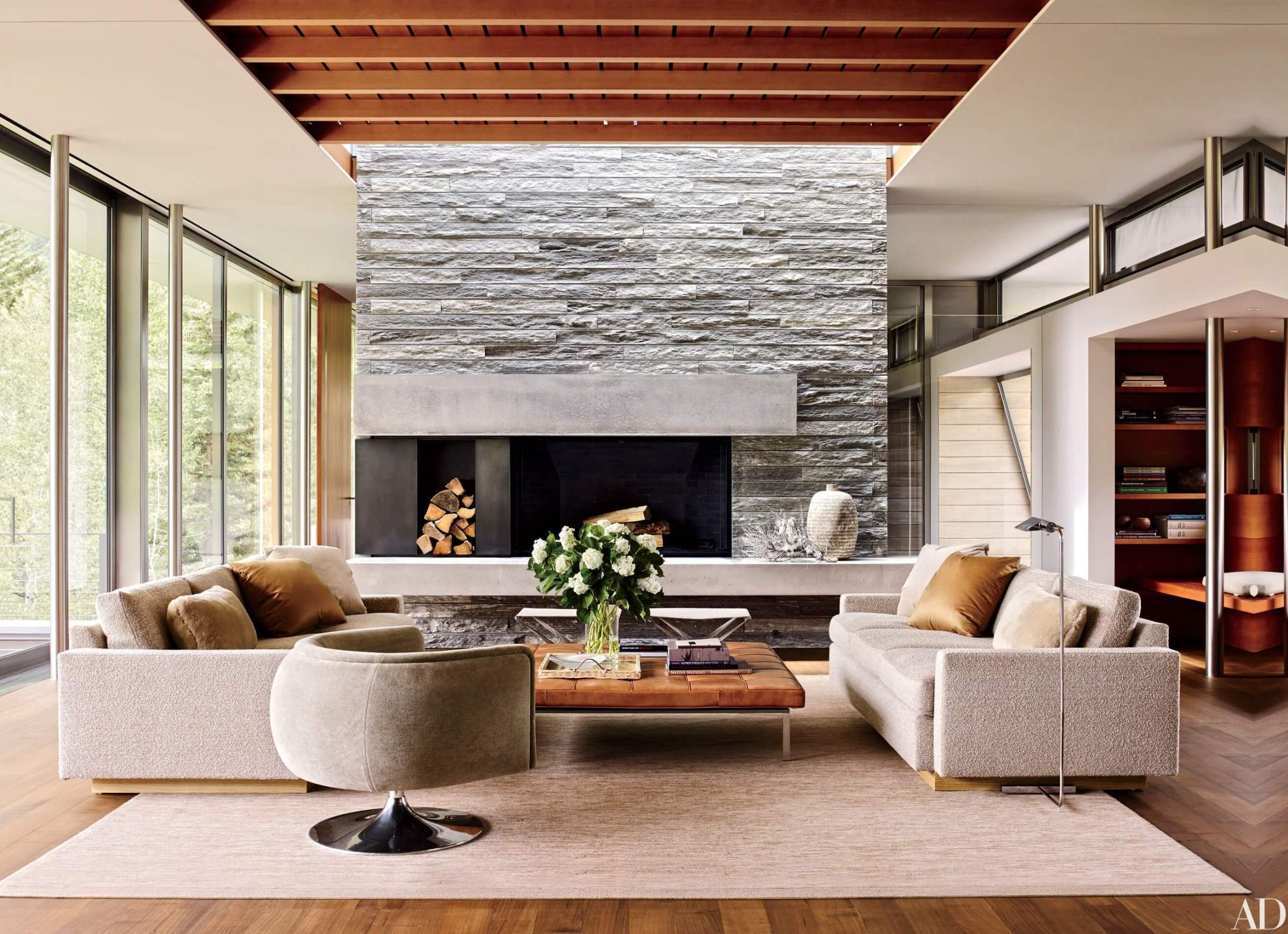Interior Design in Kuala Lumpur
BuildSpaces understands that every design should be unique and personal, thus we cater our clients to match their Interior Home Decoration to be completely individual in nature as well as the outcome. Attentive and thorough understanding of our clients’ lifestyle, style preferences and needs are the most vital characteristics possess by our personalised interior designer in order to deliver their expectations at the best possible cost. As the Interior Design Company in Kuala Lumpur, Malaysia, we adhere that our Interior Designer specialists are highly experienced and have a sense of artistry and pragmatism with the sound technical knowledge to your brief to come up with the most suitable Interior Home Decoration for you.
Modern is a broad design term that typically refers to a home with clean, crisp lines, a simple colour palette and the use of materials that can include metal, glass and steel.
Modern design employs a sense of simplicity in every element, including furniture. A word that’s commonly used to describe modern style is sleek, and there is not a lot of clutter or accessories involved with a modern style.

Modern and contemporary are two styles frequently used interchangeably. Contemporary is different from modern because it describes design based on the here and now.
The primary difference separating modern and contemporary design style is that modern is a strict interpretation of design that started in the 20th century. Contemporary on the other hand, is more fluid and can represent a sense of currency with less adherence to one particular style. For example, contemporary style may include curving lines, whereas modern design does not. You can refer to modern vs contemporary article for more information.
The minimalist concept is one that’s popular here in Malaysia. It takes notions of modern design and simplifies them further.
Colour palettes are neutral and airy; furnishings are simple and streamlined, and nothing is excessive or flamboyant in accessories or décor.
Minimalism is ultimately defined by a sense of functionality and ultra-clean lines.
Industrial style as the name implies, draws inspiration from a warehouse or an urban loft.
There’s a sense of unfinished rawness in many of the elements, and it’s not uncommon to see exposed brick, ductwork and wood. An iconic home with an industrial design theme would be a renovated loft from a former industrial building.
Think high ceilings, old timber and dangling metal light fixtures with sparse functional furniture. There may possibly be one or two pieces of abstract art or photography to add a dash of colour to an otherwise neutral colour scheme derived from the primary materials of wood and metals.
Mid-Century
Scandanavian
Transitional
French Country
Bohemian
Rustic
Shabby chic
Hollywood
English
Balinese
Mid-Century

Mid-century modern is a throwback to the design style of the mid-1900s—primarily the 1950s and 60s. There’s a retro nostalgia present in Mid-Century Modern Design, and also some elements of minimalism. Functionality or “fussy-free” was the main theme for Mid-century design. It emphasis on pared-down forms, natural or organic shapes such as “egg-shaped” chair, easy-to-use contemporary designs and simple fabrications. It easily complements any interior and also helps with seamless transition from interior to exterior.
Scandanavian
 Scandanavian design pays homage to the simplicity of life demonstrated in Nordic countries. Scandinavian furniture design often feels like a work of art, although it is simple and understated. There’s functionality in the furniture along with some interesting lines, many of which have a sculptural influence.
Scandanavian design pays homage to the simplicity of life demonstrated in Nordic countries. Scandinavian furniture design often feels like a work of art, although it is simple and understated. There’s functionality in the furniture along with some interesting lines, many of which have a sculptural influence.
Other common characteristics include all-white colour palettes and the incorporation of natural elements like form-pressed wood, bright plastics, and enameled aluminum, steel and wide plank flooring. If there are pops of colour it often comes from the use of art, natural fibre throws or furs, or a single piece of furniture. Spacious, natural lighting, less accessories and functional furniture characterizes Scandinavian designs
Transitional
 Transitional is a very popular style because it borrows from both traditional and modern design to facilitate a space that’s not “too much,” in terms of one style or another. There’s a sense of balance that’s appealing and unexpected.
Transitional is a very popular style because it borrows from both traditional and modern design to facilitate a space that’s not “too much,” in terms of one style or another. There’s a sense of balance that’s appealing and unexpected.
A transitional design may incorporate modern materials, such as steel and glass, and then unite them with plush furnishings.
Transitional design also includes relatively neutral colour palettes, creating a calming and relaxed space that manages to feel both stylish and sleek, as well as warm and inviting.
French Country

Warm, earthy colours are indicative of a French Country design style, as are worn and ornamental wooden furnishing. The style has an overarching farmhouse inspiration.
French Country design may include soft and warm tones of red, yellow or gold and natural materials like stone and brick. French Country design can include collections of ornate porcelain dishes and heavy linens and bed coverings.
Bohemian
 Bohemian is a popular style for home design and fashion. It reflects a carefree lifestyle with little rules, except to follow your hearts desire.
Bohemian is a popular style for home design and fashion. It reflects a carefree lifestyle with little rules, except to follow your hearts desire.
Bohemian homes may include vintage furniture and light fixtures, globally inspired textiles and rugs, displays of collections, and items found in widely varied sources including flea markets and during one’s travels.
It’s not uncommon to spot floor pillows and comfortable seating spaces when incorporating the bohemian style. This eclectic style can incorporate an ultra-glam chandelier paired with a well-worn rug and a mid-century chair. Within the Bohemian style, there’s a laissez-faire attitude where anything goes as long as you love it.
Rustic
 Rustic design is drawn from natural inspiration, using raw and often unfinished elements including wood and stone.
Rustic design is drawn from natural inspiration, using raw and often unfinished elements including wood and stone.
Rustic design may incorporate accessories from the outdoors with warmth emulating from the design and architectural details that may include features like vaulted ceilings adorned with wood beams or reclaimed wood floors.
Many designs now integrate rustic design with more modern furnishings and accessories.
Shabby chic
 Shabby chic is vintage-inspired style, but compared to Bohemian and other styles, tends to be more feminine, soft and delicate.
Shabby chic is vintage-inspired style, but compared to Bohemian and other styles, tends to be more feminine, soft and delicate.
Shabby chic furnishings are often either distressed or appear that way; paint tends to have antique-style finishes. The Shabby Chic colour palettes include white, cream and pastels. Light light fixture and wall hangings may be ornate and continue the feminine vibe of shabby chic design.
Hollywood
 Also referred to as Hollywood Regency, Hollywood Glam is a design style that tends to be luxurious, over-the-top and opulent. It’s a dramatic design style, perfect for a homeowner who enjoys making a statement.
Also referred to as Hollywood Regency, Hollywood Glam is a design style that tends to be luxurious, over-the-top and opulent. It’s a dramatic design style, perfect for a homeowner who enjoys making a statement.
This design style can incorporate some features of Victorian design, including plush, velvet furnishings, tufting and antiques. The colour palettes are particularly bold—think purples, reds and turquoise
English
 English country interior design is rustic, relaxed and comfortable. The patterns and styles are typically eccentric with a mix of classic furniture and new collections. You can create a comfortable and historic look with fine ornaments and antiques. A balanced combination of feminine accents and complimenting colors further enhance the English country theme in your home. This archetypal style is all about designs that flow with less contrast. Whether you are looking for a traditional motif or one with a modern twist, make simple changes that coincide with an English country home
English country interior design is rustic, relaxed and comfortable. The patterns and styles are typically eccentric with a mix of classic furniture and new collections. You can create a comfortable and historic look with fine ornaments and antiques. A balanced combination of feminine accents and complimenting colors further enhance the English country theme in your home. This archetypal style is all about designs that flow with less contrast. Whether you are looking for a traditional motif or one with a modern twist, make simple changes that coincide with an English country home
Balinese
 One of the facts about designing using Bali motifs is that it is very versatile. This is because Bali designs can be adapted to exude either a traditional environment or one which is contemporary and more modern.If you are planning to impose a Bali personality in your space, you will need to plan what type of furniture and decorative items you want to use while promoting a space which is smooth, functional and aesthetically pleasing along the way. In most cases when it comes to Balinese furniture, they are commonly made with sculptures and very unique carvings which are associated with this tradition.The color schemes that are used are usually closely related to wood and its natural elements. Hence, it is very common for Bali design spaces to be brown, white and shades of yellow.
One of the facts about designing using Bali motifs is that it is very versatile. This is because Bali designs can be adapted to exude either a traditional environment or one which is contemporary and more modern.If you are planning to impose a Bali personality in your space, you will need to plan what type of furniture and decorative items you want to use while promoting a space which is smooth, functional and aesthetically pleasing along the way. In most cases when it comes to Balinese furniture, they are commonly made with sculptures and very unique carvings which are associated with this tradition.The color schemes that are used are usually closely related to wood and its natural elements. Hence, it is very common for Bali design spaces to be brown, white and shades of yellow.
Spaces that are designed using Balinese styles usually involve the furniture and other accessories. As mentioned, there will be carvings and sculptures used for decorative purposes. The designing of an interior space using the Bali style will include fittings like the cabinets and tea tables which are made from dark-colored wood. One of the strong elements of these spaces could include a small fountain or a simple ‘waterfall’ to promote flowing of water as well.
Get a Quick, Personalized Interior Design Quote Today.
A great rate is just a few clicks away.



